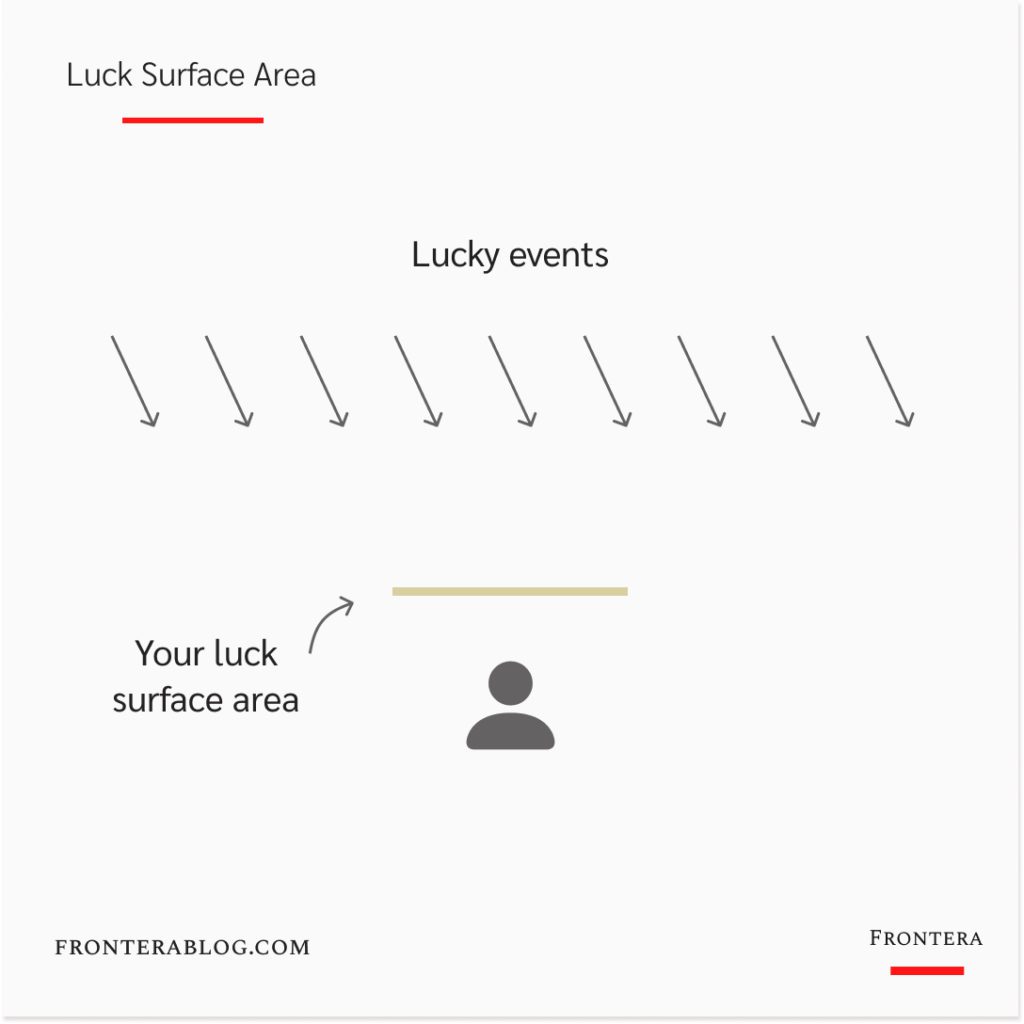Luck surface area is a mental model that explains it’s possible to increase your chances to get lucky in life.
If there was a magic potion that makes people lucky, it would be expensive.
But people would still buy it.
After all, everybody wants to get lucky.
Now, since we don’t have such a potion, are there other ways to create your own luck?
Let’s see.
Four levels of luck
Luck is an event that happens out of your control that leads to a positive or negative outcome.
Since it’s out of your control, you can’t force it.
But you can increase your chances (by a lot) of getting lucky.
To do that, let’s define luck better first.
Because not all luck is the same; there are four levels to it:
- Blind luck: This is what most people mean when they talk about luck. Where you were born, who your parents are, winning a lottery… Totally random.
- Hard work brings luck: You work on something so much that you attract luck. You tweet 5,000 times and nothing happens. But the next tweet gets a like from a big account and goes viral; you get thousands of new followers. This type of luck finds you only because you’ve hustled your way to it.
- You discover luck: When you have deep knowledge in an area, you start seeing luck nobody else can see. Millions of people watched an apple fall from a tree, but only Newton knew how to turn it into a big discovery. Identifying trends, investment and information arbitrage opportunities are other examples of discovering luck with knowledge.
- You attract luck: The ultimate state of being lucky. At this stage, you don’t need to look for luck. It comes to you all the time. Having a personal brand with a big audience, being known for what you do, or being in a position of power are good examples.
Luck surface area
Imagine lucky events as random arrows flying around. They are like Eros’ arrows; you want to get hit.
The best way to get hit by a random arrow is to increase the surface area of the target — in this case, your luck surface area.
The bigger the surface, the more chances you have to get lucky.

With four levels of luck, you see how the surface expands from the 1st level to the 4th.
Now let’s get tactical.
5 ways to increase your luck surface area:
1. Do & Tell
Everybody knows that “doing” and hard work are important. But most people miss the “telling” part.
Whatever you’re working on, share it with the world.
Each new person that hears about your work increases the chances of a lucky event.
Marketing your work is as important as doing it.
2. Follow your curiosity
Society is good at suppressing our curiosity after we become adults.
But your childlike curiosity allows you to go deep into new subjects and make connections with the other things you know.
So you can be in a position to identify luck nobody else can see (or understand) — like Newton.
Luck is what happens when preparation meets opportunity.
Seneca
3. Allow serendipity
Go to a party, join a digital community, and meet with friends of your friends.
And surround yourself with people who know more than you.
Each new person you meet expands your luck surface area.
4. Build a personal brand
Create value for people.
Become known for something. Build a reputation.
Luck will start finding you more often and in ways that you can’t imagine.
A personal brand is a competitive advantage.
5. Take luck as a skill
Now you know it’s possible to get luckier. The magic potion exists.
So start seeing luck as an improvable skill. Work on it.
While others are naively waiting for it, become a person who attracts luck.
Enjoyed this article?
Then you’ll love the How Brands Win Newsletter.
Get the “7 Positioning Sins That Cost B2B Brands Millions” guide when you join. It’s free.
References:
- The “Luck Surface Area” term was coined by Jason Roberts
- The “Four types of luck” idea was first written by Marc Andreessen in a blog post back in 2007
